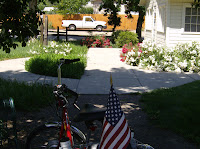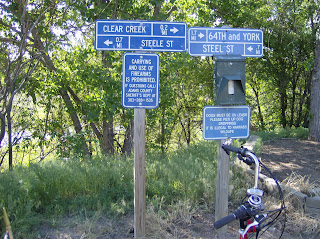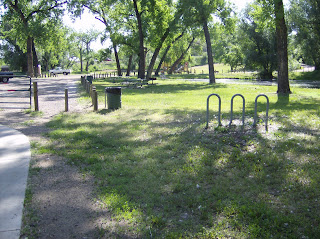
What is Field Day?
ARRL Field Day is the largest on-the-air operating event in Amateur Radio. It draws tens of thousands to the airwaves at the end of June (this year on June 26th & 27th), each year, bringing new and experienced hams together for a weekend of fun! ARRL is the American Radio Relay League
ARRL Field Day is the largest on-the-air operating event in Amateur Radio. It draws tens of thousands to the airwaves at the end of June (this year on June 26th & 27th), each year, bringing new and experienced hams together for a weekend of fun! ARRL is the American Radio Relay League
During Field Day Amateur Radio "Ham" operators throughout North America put their technical and emergency communications skills to the test over the "Field Day" weekend. Hams use this annual radio exercise to test the ability of both themselves and their equipment - All to ensure they'll be ready to volunteer their communications assistance during times of disaster and other emergencies.
I belong to two Amateur Radio Clubs which will have Field Day sites this year. The North Jeffco ARL will have their Field Day site in Bear Creek Lake Park in Lakewood, CO (Where I will be) and the Colorado QRP Club whose primary public site will be in Cherry Creek Park in Denver.
You are encouraged to visit any local Field Day site, but I personally invite you to visit me and the North Jeffco ARL in Bear Creek Lake Park. It will cost you $5.00 ($4.00 for old farts like me) to get into the park. There will be signs directing visitors to our Field Day site in the park. Look for big antennae. Here is a picture from last years Field Day.

So pack up the kids and a picnic lunch or dinner (and maybe a camp chair) and come visit us. Learn about amateur radio (Hams) and get a chance to listen to communications from around the country and around the world. You may even get a chance to talk on the air. We will start setting up as soon as the park opens on Saturday and begin transmitting at noon - the official start of the 24 hours of field day.
Politicians and public officials are encouraged to visit and get their pictures taken at a radio or with the antennae in the background. Help support the organizations which always respond in emergencies and get some good publicity.
Cyclists may enter the park on their bikes for FREE. You may ride west on the Bear Creek Trail into the park (this requires coming over the dam) or park in Morrison and follow the trail eastward into the park.
I will be riding my Trike at various times around the park and making radio contacts as I ride. See the amazing trike with radio, antenna, headset, etc.
 Here is a map of a ride I made on June 7th to scout out the location. The west end of the ride is the location of our field day.
Here is a map of a ride I made on June 7th to scout out the location. The west end of the ride is the location of our field day.The American Radio Relay League sponsors the annual Field Day event and invites all amateur radio operators to join the fun. Yes, fun(!) is the operative word here - Hams enjoy the Field Day experience on a number of levels that include camping, tinkering with portable equipment, installing temporary antenna "farms," adjusting solar panels or just enjoying the social interaction with friends, family and fellow Hams!
Here is a map of Bear Creek Lake Park. Entry is from Morrison road just east of C470.
 I am KDOKFL .... Clear
I am KDOKFL .... Clear










































 I started on the Platte River Trail at 70
I started on the Platte River Trail at 70



 Just west of Wadsworth the trail pass a small isolated park that is had to find from the road and thus is not overrun with people. The area has some mature trees and is quite nice. Mature trees are uncommon on
Just west of Wadsworth the trail pass a small isolated park that is had to find from the road and thus is not overrun with people. The area has some mature trees and is quite nice. Mature trees are uncommon on 

 At mile 14.5 the trail passes under I70 and heads to Golden on a course parallel to highway 58. Much of this portion of the trail has been relocated and is new. The lush trees are left behind and the flora more grassy.
At mile 14.5 the trail passes under I70 and heads to Golden on a course parallel to highway 58. Much of this portion of the trail has been relocated and is new. The lush trees are left behind and the flora more grassy. The trail begins some serious climbing and in about 3 miles tops out where I took this picture.
The trail begins some serious climbing and in about 3 miles tops out where I took this picture.






